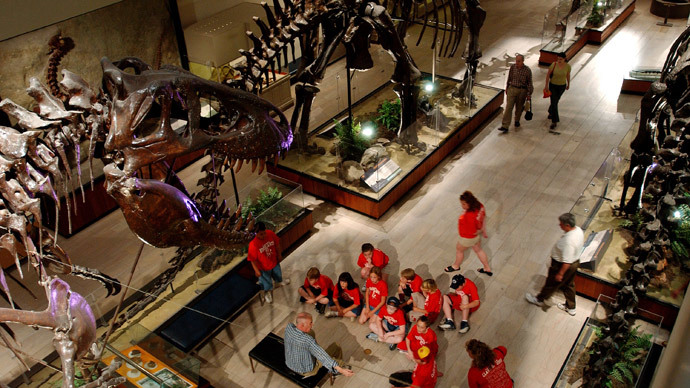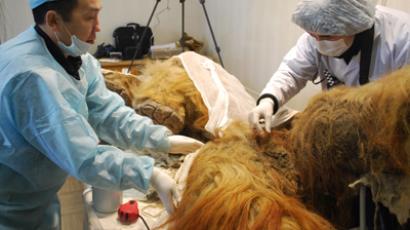‘Scary & absurd Chicken from Hell’ roamed US millions of years ago

Scientists have unveiled an unknown species of predatory, bird-like dinosaur with sharp claws, a beak and over 3 meters tall. The freakish animal, which roamed the US 66 million years ago, has been aptly dubbed the ‘Chicken from Hell.’
Researchers at the Carnegie and Smithsonian museums, together with colleagues from the University of Utah, are excited and perplexed at the scary contemporary of T-Rex and native of the Dakotas, with its runners’ legs, sporty body – and probably a very unfriendly demeanor. Despite this, the ‘perdition-poultry’ was an omnivore and fed on a varied diet of smaller animals, vegetation, plants and other animals’ eggs. It was actually a very precisely engineered and evolutionarily-adapted animal, researchers explained in a press release on the University of Utah website.
Neither chicken, nor even bird, “it was a giant raptor, but with a chicken-like head and presumably feathers,” said the co-author Emma Schachner of the animal. It “stood about 10 feet tall” and “would be scary as well as absurd to encounter,” added Matt Lamanna of the Carnegies Museum of Natural History in Pittsburgh, who was lead author on the study, which reached long-awaited publication in PLOS ONE, a journal of the Public Library of Science.
“We jokingly call this the ‘chicken from hell,’ and I think that’s pretty appropriate.” Most resembling a gigantic flightless bird, akin to an ostrich or an emu, the animal is actually an oviraptosaur, a feather-clad predator whose fossils can most commonly be found in Asia, although the current reconstruction was made from a North-American find.
"It would have had a lot of birdy behaviors," Lamanna added.
The fowl beast’s real name is Anzu wylie: the first word derived from a bird-like demon from Mesopotamian mythology, while the other from the name of a grandson of one of the Carnegie Museum’s trustees. The Pittsburgh museum has the fully reconstructed skeleton currently on display.
The excavation yielded three partial skeletons of the oviraptosaur, dug up at one of the uppermost sedimentary rock levels of the Hell Creek rock complex that spans North and South Dakota in the US. The place is literally a goldmine of dinosaur fossil finds, with T-Rex and Triceratops popping up very frequently.
It’s the biggest oviraptosaur in the species, researchers say.
"This group of dinosaurs looks really bizarre even by dinosaurian standards," continued Hans-Dieter Sues, a paleontologist and co-author, also from the Smithsonian.
Another noteworthy aspect of the discovery is that there aren’t very many finds from the end of the Cretaceous period. This lends suspicion to the hypothesis that at the time the supposedly apocalyptic meteor hit Earth and triggered a mass extinction of the beautiful and scary animals, the dinosaurs were actually already on their way out.
Researchers would also argue, however, that dinosaurs haven’t really gone away. Recent finds suggest that a large number of them had feathers, which goes against almost everything the ’80s generation read in books.
The flightless, bird-like dinosaur species mark the end of an era, but there’s a strong belief among scientists that the birds we see today are living proof that the graceful animals have not gone away, but are merely another link in the chain of evolutionary pressures.














